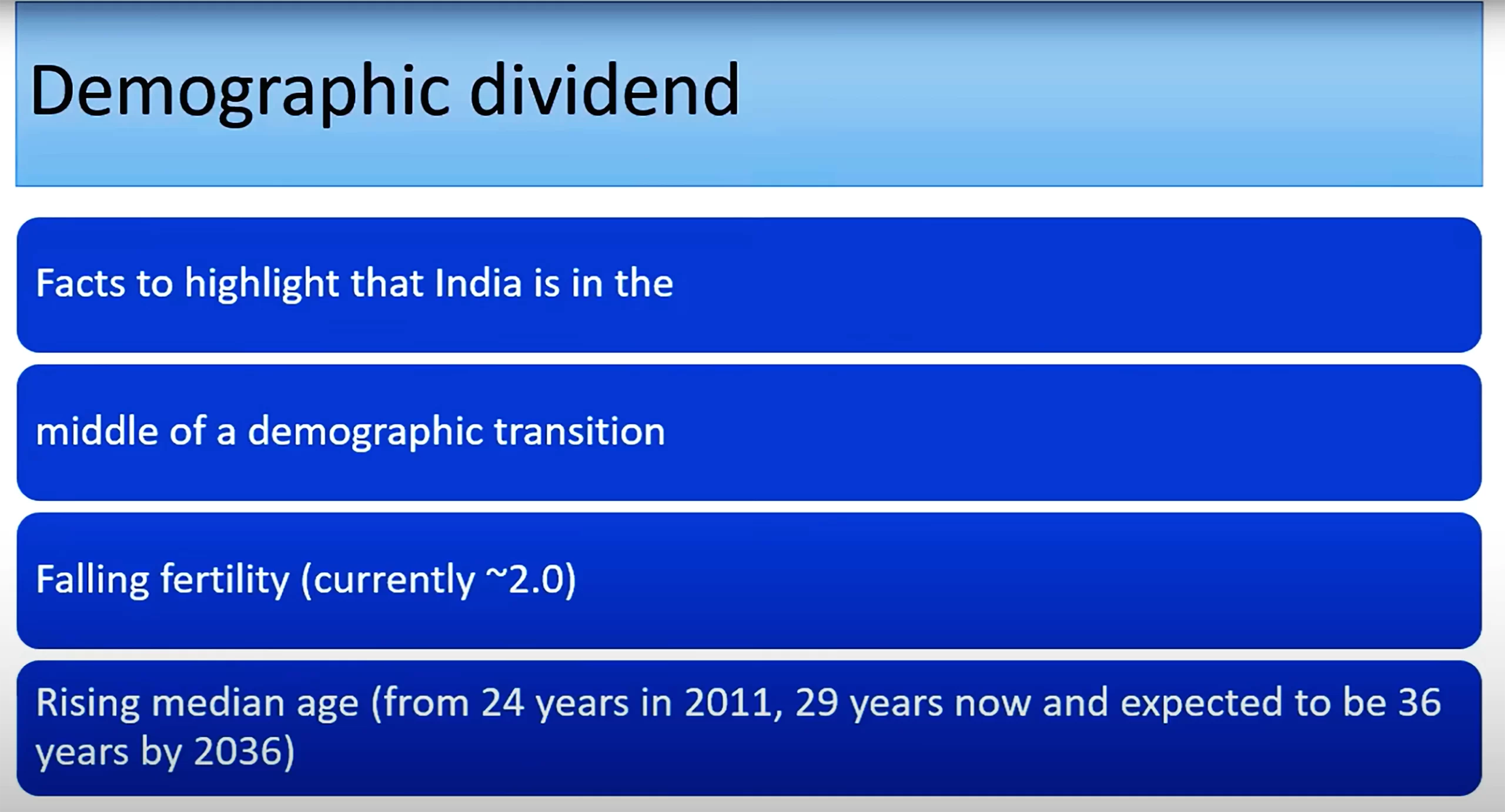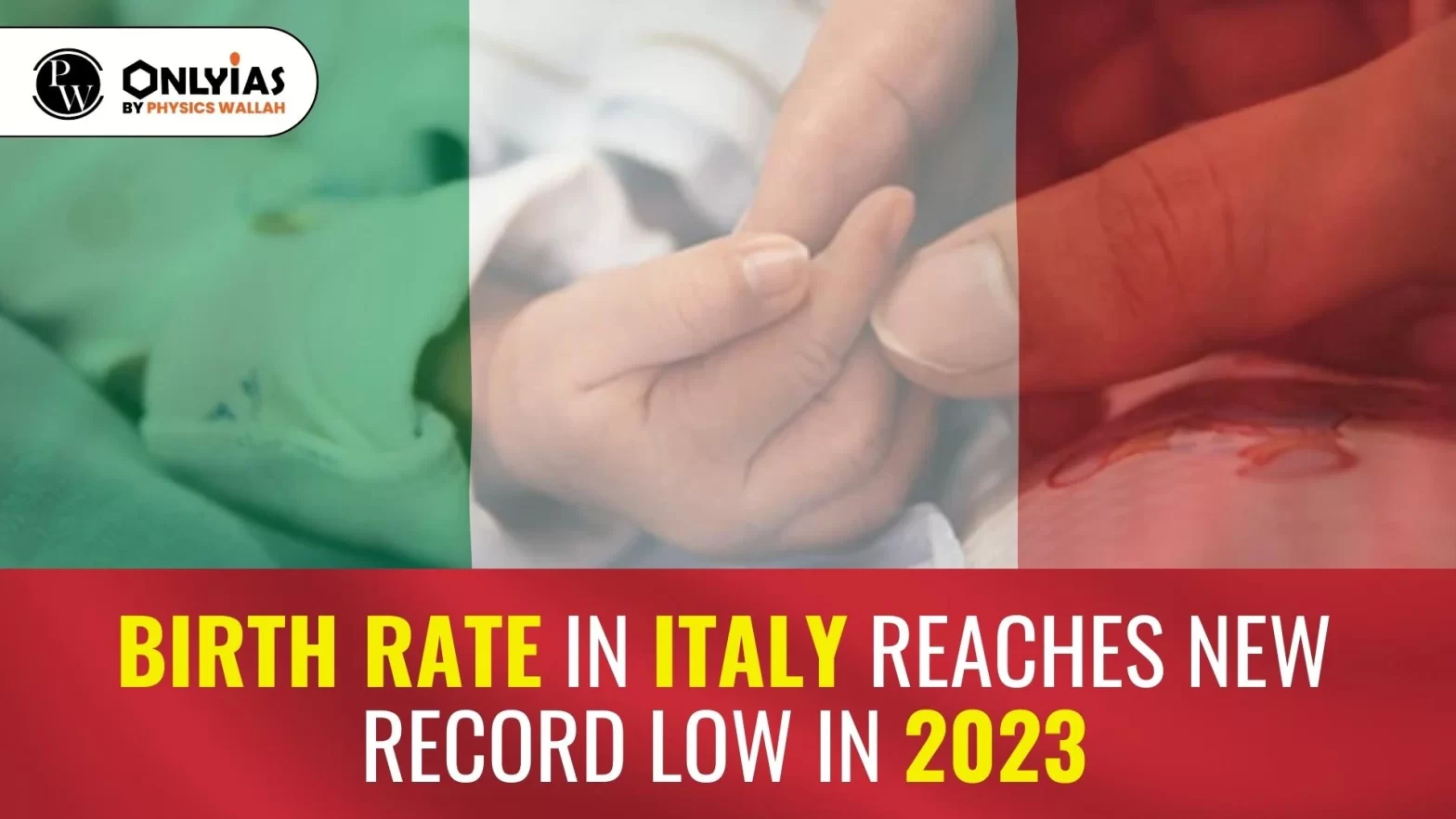Context:
- Severely depleted birth rate is affecting the entire Europe significantly. Italy has recently set a new all-time low, as there were no births in the entire country for three months.
| Relevancy for Prelims: Birth Rate in Italy, Fertility Rate, Dependency Ratio, and Population Replacement Rate.
Relevancy for Mains: Declining Birth Rate in Italy, and Aging Population, Demographic Dividend, and Migration. |
Why the low birth rate in Italy? – Reasons
- Italy has one of the lowest fertility rates, with an average of 1.26 children per woman in 2022.
- Below the replacement rate of 2.1 children per woman needed to maintain a stable population.
- Reasons for Low Fertility Rate:
- Economic uncertainty
- Changing gender roles
- High cost of childcare
- Lack of family support
Italy’s Aging Population
- Median age of 45.7 years in 2023: Due to a combination of low fertility and high life expectancy.
- Increasing Life Expectancy: This positive development is also putting a strain on the social security system and public services.
- Low Fertility Rate: There are fewer young people to support the growing population of older adults.
|
Negative Net Migration
In 2022, there were 147,000 more departures than arrivals due to following reasons:
- Economic opportunities: Many young Italians are emigrating to other countries in search of better economic opportunities.
- High unemployment: Italy has a high unemployment rate, especially among young people.
- Political instability: Italy has a history of political instability, which can deter people from immigrating to the country.
Consequences
- Shrinking Workforce: The number of people of working age (15-64) is projected to decline from 35.8 million in 2023 to 31.9 million by 2050.
- Declining Tax Revenues: This is making it difficult to fund public services such as healthcare, education, and pensions.
- High Dependency Ratio: The dependency ratio is the number of people who are not working divided by the number of people who are working. Italy has a very high dependency ratio, which is putting a strain on the working-age population.
- Regional disparities: The population decline is most severe in southern Italy, where there are high rates of unemployment and emigration.
- Social and cultural impacts: The population decline is leading to a loss of cultural vitality and a sense of community.
What steps has the Italian Government taken to increase the birth rate in Italy?
- Financial Incentives: The Italian government has incentives for people to have more children, such as tax breaks, childcare subsidies, and paid parental leave.
- Immigration Policies: More flexible immigration policies to attract more workers to the country.
- Support for Families: Increased support for families, such as affordable childcare and flexible work arrangements.
Challenges in Utilizing Potential Demographic Dividend
- Informal Economy
- Caste Discrimination
- Religious Differences
- Gender Disparities
- Lack of Access to Healthcare Services
- Low Employability
- Widening Income Gap
- Generating Sufficient Employment Opportunities

|
Way Forward
- Health and Education Spending: Better health facilitates improved economic production.
- Investment in education is crucial for preparing the working-age population for the demands of the economy.
- Increase Female Workforce Participation: Implement legally compulsory gender budgeting to analyze gender-disaggregated data and its impact on policies.
- Increase childcare benefits to support working mothers.
- Bridge Skill Gap: Emphasize the importance of vocational skills development and promote internships to provide practical experience.
- Encourage Foreign Capital Inflows: Aim for a Gross Fixed Capital Formation (GFCF) of 33% of GDP to meet growth and job creation goals.
- Transition from the Agriculture Sector: Facilitate the absorption of labor into productive employment in non-agricultural sectors.
Also read: India-Italy Bilateral Relations
Conclusion:
The alarming decline in the birth rate in Italy necessitates urgent and comprehensive measures to address demographic challenges and ensure a sustainable future for the country.
| Prelims Question (2019)
In the context of anycountry, which one of the following would be considered as part of its social capital?
(a) The proportion of literates in the population
(b) The stock of its buildings, other infrastructure and machines
(c) The size of population in the working are group
(d) The level of mutual trust and harmony in the society
Ans: (d) |
![]() 27 Oct 2023
27 Oct 2023

